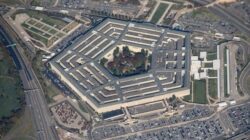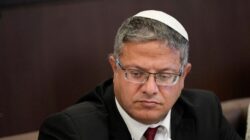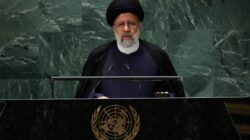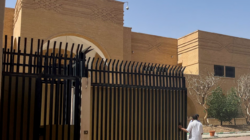LONDON – Human Rights Watch has accused Iranian security forces of using “unlawful lethal force” on Sept. 30 in the city of Zahedan, killing dozens of protesters during what the organization dubbed “Bloody Friday.”
The organization also urged the UN fact-finding mission in the country to concentrate on state acts of violence in “minority-dominant” regions such as Kurdistan and Sistan and Baluchistan, where the massacre occurred in the provincial capital.
It also emphasized the importance of Iran adhering to the UN Basic Principles on the Use of Force and Firearms by Law Enforcement Officials.
The group stated that it had reviewed 52 videos and images provided by the Iranian human rights group Haalvsh, as well as witness testimony, to determine that at least 12 people, including a young boy, were killed in Zahedan on September 30.
Thirty people were injured, and HRW reported that at least eight more people were killed in the city in the days that followed, including three children.
Meanwhile, Balochi human rights groups in the area put the death toll between Sept. 30 and Oct. 5 at 97, including nine children.
Security forces opened fire on protesters from rooftops surrounding the city’s Grand Mosalla prayer hall as a large group of demonstrators made their way toward a local police station, and later at the city’s largest Sunni mosque as the dead and injured were brought there.
Protesters retaliated with stones and Molotov cocktails, and many bystanders were caught in the crossfire, according to HRW.
Protesters in response to the attack killed at least four members of Iran’s Islamic Revolutionary Guard Corps.
“As I came out (of the prayer hall) to look for my brother, I saw bodies on the ground, mostly young people,” one witness told HRW. I didn’t even realize the cops were shooting until I noticed they were firing from the buildings.”
Another witness, Ismael Shahbakhsh, told HRW that he went to a nearby hospital to look for his nephew.
“When I entered the emergency room, I witnessed a distressing scene that is impossible to describe,” he said.
“The floor’s white ceramic tiles had turned red… Farzad’s name was not among those on three pages of 10 to 15 names of those injured… Following that, a nurse approached me with five or six pages, each with 18 to 20 names on it, and informed me that Farzad was among those who died.”
Tasnim News, a state-affiliated news agency, later claimed responsibility for the violence, which it labeled “terror attacks.” Since then, the group has denied the allegations.
“It’s the police station that first starts shooting, shooting indiscriminately and shooting military ammunition, not only toward the place where those youngsters were chanting and expressing their feelings, but even toward inside the Grand Mosalla, where people were praying,” a prominent local imam told HRW.
“They shoot there and throw tear gas inside, and even the women’s section is gassed and shot at, and one of the women is killed and martyred.”
On Oct. 28, local authorities announced that six members of the security forces, as well as 35 protesters and members of the public, had been killed in Zahedan during the clashes, blaming “negligence” for the deaths of innocent worshippers and dismissing the local police chief.
According to HRW, authorities killed two children during protests in the city on the same day, a 13-year-old and a 16-year-old who were both shot in the head.
Protests have engulfed Iran since the death in September of 22-year-old Kurdish woman Mahsa Amini at the hands of the country’s morality police, after she was accused of improperly wearing her hijab.
Hundreds of people have been killed by government forces across the country, and thousands more have been arrested, with some of those detained being executed by the regime and many more facing death or long, punitive prison sentences, as well as widespread reports of torture and other forms of mistreatment while in detention.
As of December 9, HRW said it had evidence for at least 255 deaths, with another 226 under investigation.
It went on to say that it had more evidence of “handguns, shotguns, and military assault rifles” being used against protesters “during largely peaceful and often crowded demonstrations in at least 13 cities across the country,” with the majority of the lethal force going to ethnic minority-led regions.
According to HRW’s senior Iran researcher Tara Sepehri Far, the events of September 30 in Zahedan were the bloodiest in Iran this year.
“The number of protesters and bystanders shot by Iran’s security forces on ‘Bloody Friday’ was the highest in a single day during the protests, but no one has been arrested,” she said.
“The government’s heinous brutality has pushed the struggles of long-ignored communities like Zahedan to the forefront of protests.”
Source: Arab News










